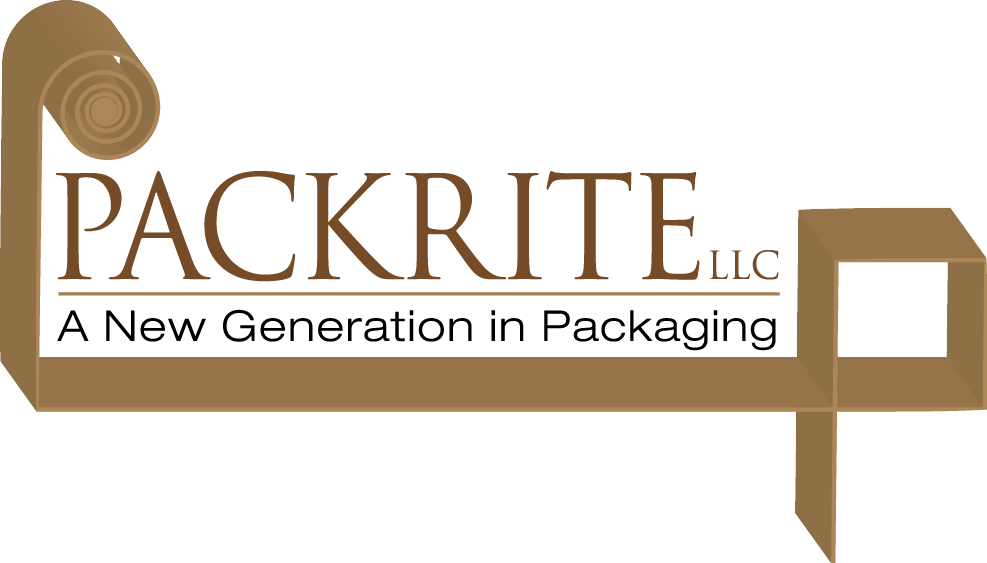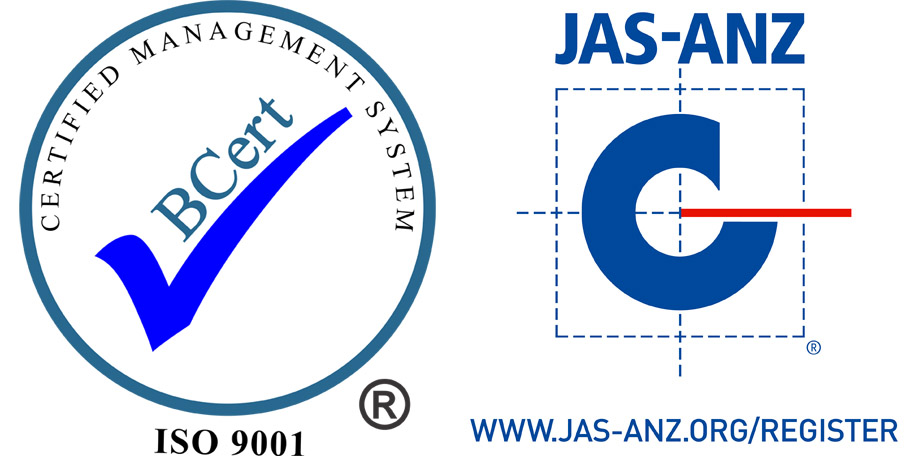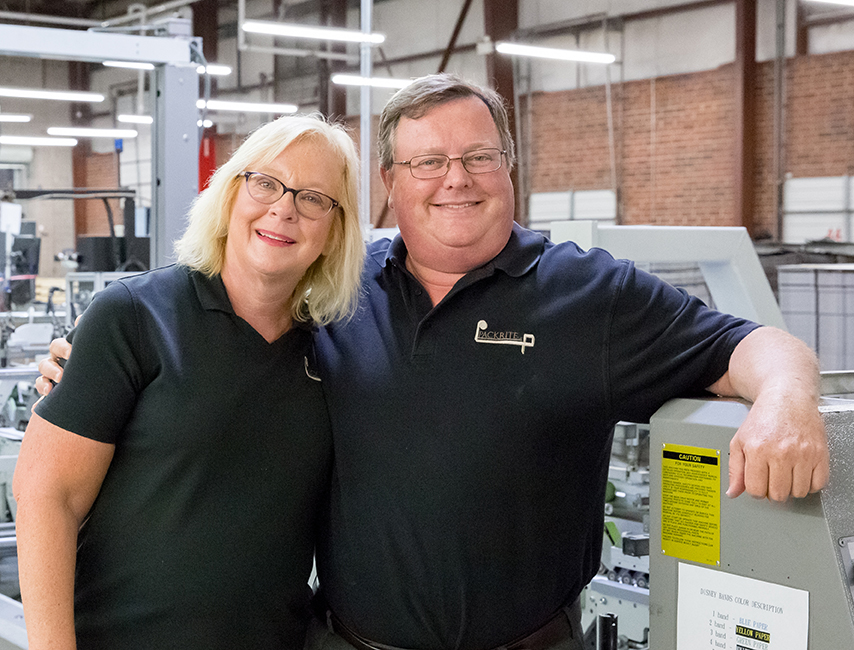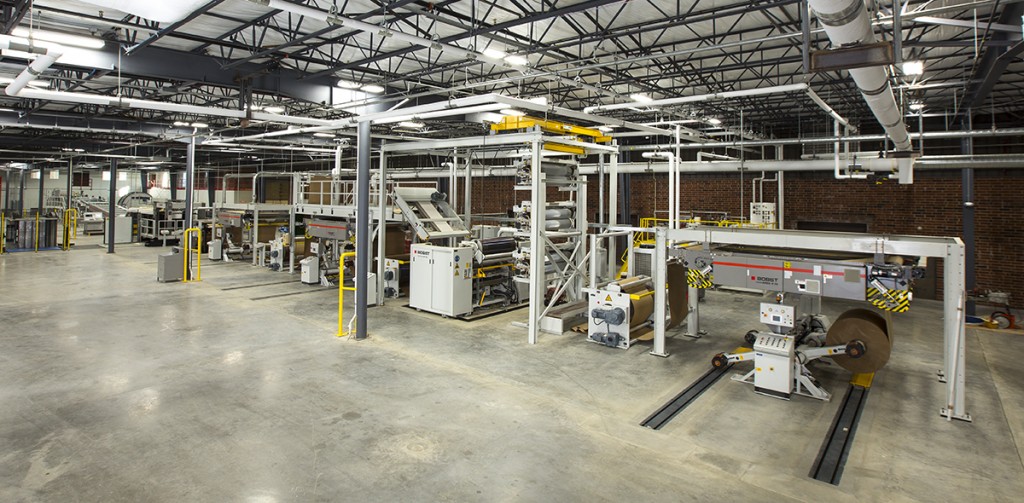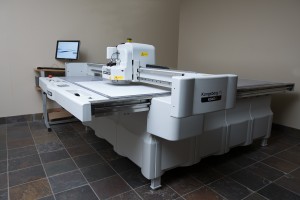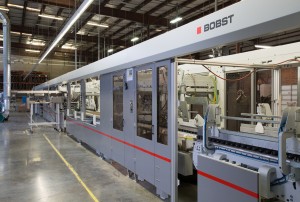 Packrite Expands Again To Meet Growing Demand
Packrite Expands Again To Meet Growing Demand
by Len Prazych – published Jan. 2, 2017
Biggest. Fastest. Best. First. These are the four words most frequently used by Michael Drummond, President of High Point North Carolina based Packrite LLC. Co-founded and co-owned with his wife, Mary, Packrite is a trade finisher for the corrugated and folding carton packaging industries and according to Drummond’s ‘elevator pitch.’ “We provide our customers technology and services that will allow them to expand their capabilities and capacity to create enhanced value for their customers and maximize the consumer experience.”
The Drummonds founded Packrite in 2008 with 18 employees, it currently boasts 110 World-class employees. Started during the onset of the Great Recession and at a time when it made the least sense to create an unconventional business model designed catering to the underserved microflute market. In an attempt to be the best corrugated and folding carton manufacturer, the Drummonds recently made a multi-million dollar investment. This investment expanded their 125,000 square-foot facility by 60,000 square-feet with the specific objective of housing a new Bobst 87-inch MASTERFLUTE 324 Asitrade Singleface Laminator, the largest and first of its kind in the world.
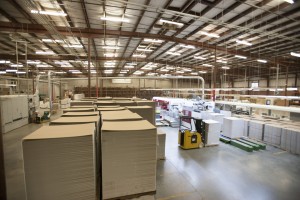
Packrite manages every aspect of the business, from sourcing pre-print sheets to the bundling of the finished product.
Packrite is a ‘Bobst shop’; through and through, and the Drummonds’ loyalty to, and preference for, Bobst equipment arose, because Michael Drummond believes: “it’s the best equipment in the industry.” Packrite already ran a 65” custom-made Asitrade, purchased in 2008, seven years of cutting-edge technology removed from the newest, biggest, and fastest 87” machine that was installed in December of 2015.
Reflecting on the early days of diving headlong into the corrugated marketplace with a folding carton mentality, Drummond said that he and his wife had built their plant with a footprint that had never been done before, with the goal of “producing the best fluted sheets that the marketplace has ever seen.”
By all measures, the company has succeeded. Packrite has achieved double-digit growth every year since its founding and has been named by Inc. Magazine as one of America’s fastest growing privately held companies in each of the past five years. Along with the 65-inch Asitrade, the Drummonds initially invested in a Bobst Masterfold 130 high-speed folder gluer and a Bobst Expertcut 145 Autoplaten® diecutter, set-up as one of the first cross-over machines, able to run folding carton as well as fluted product, which, at the time of purchase, was the first and only diecutter of its kind in the world.
“Our folding carton customers have praised us on the flatness of the sheets and how easy they are to run. And our corrugated customers are wondering how we hold the print-to-cut registration. Both the corrugated and folding carton industries have a wealth of knowledge but neither had put it together for the high-graphic fluted market the way we have been doing it and that’s exactly how and where we’ve set ourselves apart.”
Packrite’s business model is similar to that of a sheet feeder. Many sheet plants don’t want the expense or need the volume of operating their own corrugator. What often happens is that they partner with other similar sheet plants so they can own a portion of a corrugator. In much the same way, Packrite’s trade customers would like to have access to the sophisticated leading-edge capabilities Packrite provides, but do not want to risk the monetary and time commitment this high-level investment requires. As a trade finisher, Packrite allows a large number of customers to have access to the best and most cost-effective production tools on a shared basis. “In short,” says Drummond, “We provide cost-effective access to the latest technology to allow customers to expand their capabilities and capacity without capital investment.”
Speed is Everything
The Bobst Asitrade, at approximately 300 feet in length, is as long as a football field and so fast that Drummond had to add a semi-automatic pallet inserter, making the machine’s footprint even larger. A forklift driver slides a pallet of top sheets up to the machine, which automatically inserts them, removes the board and ejects the empty pallet.
The first half of the 87-inch machine is essentially a narrow web corrugator 64-inches wide, but it doesn’t have a hot plate section like a traditional corrugator, which would damage pre-print, unlike the cold glue used to apply top sheets on the second half of the Asitrade.
Packrite’s Asitrade provides flexibility and the fastest speeds in the world. It can run sheet-to-roll or roll-to-roll. Roll-to-roll of course is what’s normal for a corrugator plant.
Indeed, Packrite’s custom-designed 87-inch Asitrade is like no other in the marketplace; it can output board in two different directions, the first time Bobst has ever designed an Asitrade that way. Why? “Because that’s the way I wanted it,” says Drummond confidently, knowing that this was the best and fastest way to move board: one line comes off the machine and goes back into the plant, the other comes off the machine and goes directly to the shipping dock, where it is loaded onto multiple tractor trailers a day, five days a week and sent to its customers across North America. “I asked Bobst for the best state-of-the-art machine in the world and that’s what they built.”
The Asitrade transports a load and can pivot it, position it in any direction, or flip it over and spit it out. It also has another thing Drummond specially requested, a feature that few Asitrades have: a sheet counter. “So we can get exactly the same amount of sheets every time, no matter what the height of the load is,” he says. “Before we had to rely on the height of a load to measure our sheets, but that meant the count was sometimes inaccurate.”
In addition to the installation of the 87-inch MASTERFLUTE 324, Packrite’s recent expansion included a state-of-the-art, dedicated boiler room and a 250 horsepower boiler with a complete recovery system that fuels both of the company’s Asitrades. Better input with cleaner, more consistent steam, as opposed to being created by a steam generator, makes the singleface laminators as efficient as possible. The Drummonds spared no expense in their goal to make Packrite a world class facility: new doors on the export docks; a trucker’s lounge to keep drivers off the production floor; “cages” to limit access into the plant, which is completely fenced in; security cameras throughout the entire facility, inside and out; a new employee breakroom, lockers, new bathrooms; and an outside patio, where employees can enjoy the fresh North Carolina air. An additional 3,000-square-feet was added on the facility’s mezzanine for future expansion.
The company already maintains 22,000-square-feet of space dedicated to roll stock, a design center with two structural designers on the payroll and a quality lab.
Bigger and Faster
Because Packrite is making bigger boxes, it needed a bigger cutting table. Its new Kongsberg can cut 66-inches by 87-inches. Bigger and multi-up boxes also called for a bigger diecutter. In addition to its very versatile Bobst Expertcut 145 Autoplaten diecutter, Packrite added a Bobst Mastercut 2.1 Autoplaten diecutter, a machine which Drummond describes “as a beast that eats and eats. It’s always waiting to be fed and we’re always feeding it.” A forklift driver slides a pallet of board up to the machine, which automatically inserts it, registers it and ejects the empty pallet. As long as pallets are continuously delivered, the machine will continue to run.
The Mastercut 2.1 is a critical part of the company’s operation and is a market differentiator. The 51-inch by 83-inch diecutter has a print-to-cut precision better than a 1/64 of an inch. The Power Register feature makes that possible because each sheet is perfectly aligned and positioned as it enters the diecutting section. “In corrugated, a quarter of an inch of print-to-cut is considered acceptable,” says Drummond. “At a one-sixty-fourth print-to-cut accuracy, we are doing things every day that raise the bar, making it easier to sell into the industry.”
Then there are the folder-gluers. Packrite’s Bobst 130 Masterfold glues boxes in sizes up to a 51 7/8-inches by 35-inches at up to 100,000 pieces an hour. Alongside the 130 is a newer, bigger Bobst Masterfold 170, a 63-inch by 67-inch high-speed folder-gluer — the biggest in the United States –with double Gyrobox rotators and a handle inserter.
Gyrobox allows the rotation of a blank 90 degrees. Many complicated jobs that require multi-directional gluing, which would therefore ordinarily require two passes, can be accomplished in just one pass, resulting in a doubling of production for many jobs. Packrite’s double Gyrobox modules, when installed in December of 2012, were the first in the Western Hemisphere and only the second in the world.
While the Gyrobox is relatively new to the corrugated market, it was first developed for the folding carton industry in 1998 and according to Drummond, enables Packrite to create the widest variety of trays, internal and multi-position dividers, 4- and 6- corner boxes, automatic bottom cartons, and many other specialty items.
Packrite also runs a Kohmann 1350 53-inch by 40-inch windowing machine, a piece of equipment that Bobst does not manufacture or the Drummonds would have likely purchased one of those also.
From Here
So how does Packrite grow from here? National or regional expansion? Packrite operates out of one plant at one location headquartered in High Point, North Carolina. The Drummonds currently have no plans and no reason to open another. The company’s customers are already national in scope and its technical sales reps are helping their customers become more successful at what they do. The fact that Packrite has so many sheet plants as customers means that there would be competitions’ sales people are essential selling for Packrite, an efficient – and better – way to do business.
Michael Drummond says the company operates on a five-year plan and strategizes on a ten-year plan with financials built in. “We’re always planning and always thinking two and three steps ahead while asking, ‘What are we doing?’ and ‘Where are we going?’ and most important, ‘How are we going to get there?’”
The Packrite business model has proven to be successful: the company can manufacture product for their competition cheaper than they can make it themselves, turning them into Packrite customers. They don’t have the capabilities or the equipment to do for themselves what Packrite efficiently and economically provides. The large format capabilities allow large format jobs to run multi-up nested sheets through the Asitrade thereby reducing the number of sheets and machine time. With both singleface lamination and diecutting, machine time can be reduced by half or more because it requires less time to achieve the same production. These are the benefits of working with a trade finisher for its box and carton plant customers.
Business is booming for Michael Drummond, “We’re currently running two shifts and preparing to add a third shift because we’re running flat out.” When asked of his drive and motivation, Drummond says, “I’ve always wanted to be the best. That said, our growth and success is exceeding my wildest dreams. Our facility, like our Bobst equipment, is ‘world-quality-state-of the art,’ which is where we want to be. That’s where we are.”
